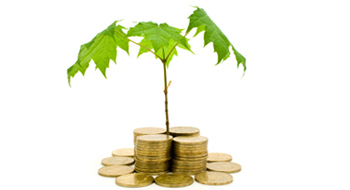
ESG investing—which considers environmental, social and/or governance issues in addition to financial performance—has reached a crossroads in recent years. What began as an investment approach predominantly oriented around social impacts has expanded to include a range of environmental and governance issues and is now attracting attention from mainstream investors primarily concerned with the associated financial impact
and risk.
The overall premise for ESG investing is straightforward: a corporation that is well governed and operates in an environmentally and socially responsible manner should perform better. However, there are different ways to approach ESG investing. It’s important for investors to articulate their ESG beliefs, risks and exposures, and to respond accordingly.
There are three main kinds of ESG-minded investors:
- In Camp 1, the modus operandi is, “I find your behaviour objectionable, so I’m not going to buy you.”
- Camp 2 takes a more balanced approach: “I can do well while also doing good.”
- Camp 3 takes an even more nuanced approach: “ESG factors can be financially material to investment performance, for better or for worse.” This last camp understands that some, but not necessarily all, ESG factors are financially relevant. It attempts to incorporate this analysis into investment decision-making by developing the analytical framework to arrive at such conclusions in its early stages.
Deutsche Bank indicates that “the market for sustainable [ESG] investments spans a wide variety of concepts, which, though they may be closely related, are largely characterized by individual perceptions of market participants.” These concepts include targeted thematic investments seeking exposures to certain themes such as low-carbon energy or water scarcity; active ownership (in which asset owners are mindful of ESG risks post-purchase); best in class and positive screening (which look for outperformance against ESG criteria); and selective integration of ESG issues and factors into investment models informed by empirical analysis.
Weighing the factors
ESG investing presents both costs and benefits—and both aspects are equally important for investors. State Street Global Advisors’ analysis of the performance implications of ESG scores and ratings for equity prices has found that while ratings have variable predictive power overall, there is a forecasting ability in pockets of the investment universe. In some instances, that predictive power actually strengthened over time. Preliminary evidence also suggests that equities with high ESG ratings provide downside protection during bear markets, though more analysis is needed.
There is also an observable relationship between ESG investing and fixed income performance. This relationship may become a greater area of focus over time, as credit rating agencies will likely factor ESG issues into their ratings. A 2010 study from Maastricht University found that U.S. corporate issuers with environmental problems had a higher cost of debt financing and lower credit ratings. In addition, Standard & Poor’s plans to assess climate risk and factor it in to ratings across all industrial sector corporate debt issuers in the future.
Investors should consider their goals and priorities and then evaluate how ESG issues do or do not fit with these objectives. Simply ignoring the ever-increasing body of research and developments around ESG investing and sustainability, however, has become too risky.
